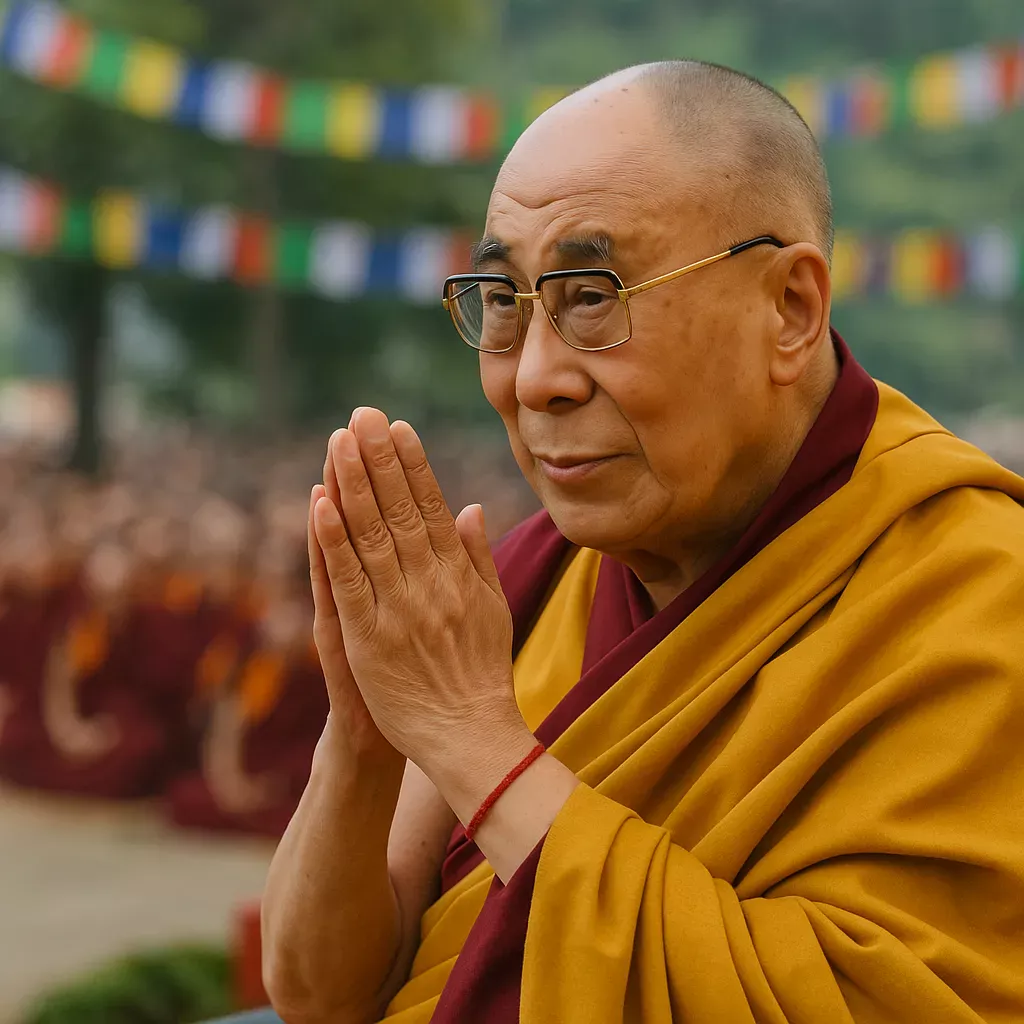The morning mist curled around the mountains of Dharamshala like incense smoke rising from a monastery. Monks in crimson robes lined the courtyard of Namgyal Monastery, chanting in low, resonant tones. In the hillside town where he has lived in exile for over six decades, the 14th Dalai Lama turned 90 yesterday, not with quiet retreat, but with the opening of days-long festivities that feel less like a birthday and more like a moment in history.
For the Tibetan people, the Dalai Lama is more than a man. He is the embodiment of Avalokiteśvara, the bodhisattva of compassion, a spiritual leader whose soul is believed to reincarnate with purpose and continuity. And now, for the first time in a generation, the question of that continuity is poised to be addressed head-on.
Tomorrow, during the culmination of the 90th birthday events, a formal announcement is expected outlining a pathway for identifying the Dalai Lama’s successor. It will be the clearest indication yet that the ancient tradition of reincarnation—so central to Tibetan Buddhism’s leadership—will endure, even as global politics cast long shadows over its future.
The Making of a Dalai Lama
Born Lhamo Thondup in a small village in northeastern Tibet in 1935, the boy who would become Tenzin Gyatso was just two years old when senior monks visited his home. Among a series of ritual tests, he picked out items said to have belonged to the previous Dalai Lama, seemingly confirming what the elders believed: that he was the next in the line of living Buddhas.
That process, part mysticism, part centuries-old protocol, has always followed a death. When a Dalai Lama passes, monks read the signs: dreams, omens, the direction of the cremation smoke. A search begins, often years long, to find the child who carries the same soul.
But that tradition has been under siege since 1950, when China annexed Tibet. Nine years later, after a failed uprising against Chinese rule, the young Dalai Lama fled to India, where he built a government-in-exile and a life of global advocacy for nonviolence, autonomy, and spiritual preservation.
China, meanwhile, insists that it alone has the authority to name Tibet’s highest lamas. In 1995, Beijing disappeared a 6-year-old boy who had been recognized by the Dalai Lama as the reincarnation of the Panchen Lama, a key religious figure who, in tradition, would help identify the next Dalai Lama. That child has not been seen since.
A Choice Beyond Borders
The Dalai Lama has long suggested that his next incarnation might break with convention. He has hinted that he may not reincarnate at all—or if he does, it will be outside Chinese territory. “The purpose of reincarnation is to continue the work,” he once said. “If that purpose is no longer relevant, then the tradition may stop.”
But the growing sense now is that the tradition will not stop—it will adapt.
By announcing a framework for his own succession, the Dalai Lama is doing something quietly revolutionary: asserting that even in exile, even under the weight of geopolitical pressure, the soul of Tibetan Buddhism remains in Tibetan hands. The process will likely emphasize community, clarity, and safeguarding against manipulation, though details remain closely held.
Between Heaven and Earth
In Dharamshala, the air is thick with reverence and anxiety. The Dalai Lama’s charisma and spiritual authority have long been a unifying force for Tibetans around the world. What comes next feels as sacred as it is uncertain.
“He’s not just our leader; he is our hope,” says Sonam, a second-generation exile in India. “Knowing that there is a plan, even if it’s just a beginning, gives us something to hold on to.”
Outside the monastery gates, prayer flags flutter in rows, tethered between trees and rooftops, sending silent blessings into the wind. The mood is celebratory, yes—but also deeply reflective.
Tibetan Buddhism has always embraced impermanence. But in this moment, on the edge of a spiritual transition, under the gaze of history, the Dalai Lama’s 90th feels less like a farewell and more like a hand extended into the future.
The path may be fraught. The questions, complex. But as the world watches, one thing is clear: the flame still burns.





